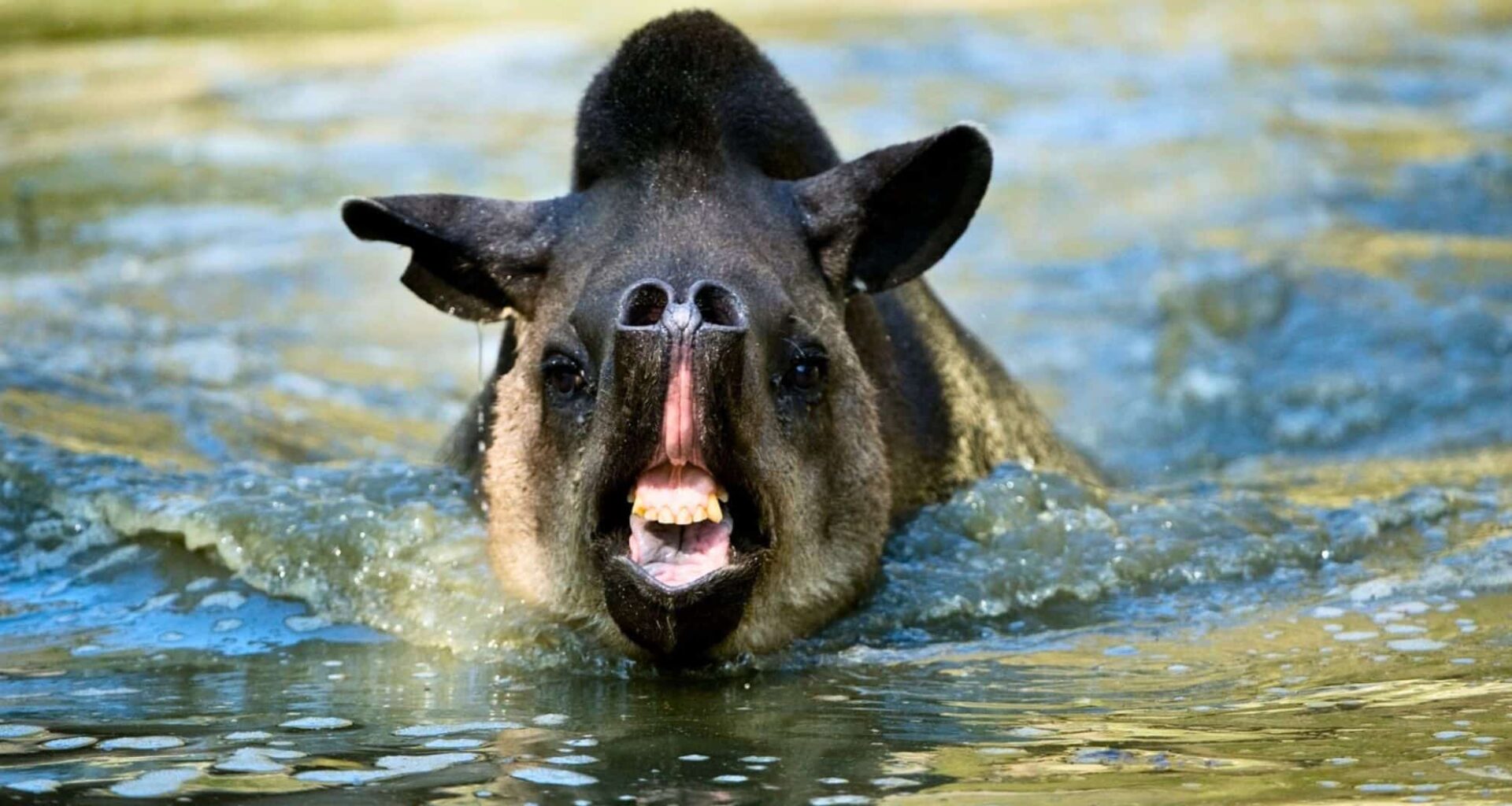In January 2025, a truly remarkable event unfolded in the Brazilian Atlantic Forest: the South American tapir, a mammal thought to have disappeared from the region more than a century ago, was spotted once again. Filmed by surveillance cameras, these majestic creatures—three in total—were caught peacefully roaming the lush landscape of Cunhambebe State Park.
A Long-Awaited Return
The return of the South American tapir to the Brazilian Atlantic Forest is nothing short of extraordinary. As reported by g1, the last confirmed sighting of the species in this area occurred in 1914, a full 111 years ago. Tapirs, often described as the ‘gardeners of the forest,’ play an essential role in maintaining the biodiversity of the region, dispersing seeds and nurturing forest regeneration. However, by the early 20th century, the species had vanished from the area due to habitat destruction, hunting, and the encroachment of human development.
Despite its disappearance from this particular region, the tapir’s reappearance has captured the attention of conservationists around the globe. The fact that these animals were able to survive in the region, unseen for more than a century, demonstrates the incredible resilience of both the species and the ecosystem itself.

Theories Behind the Miraculous Return
Several theories are currently being examined to explain their sudden reappearance. One hypothesis suggests that a hidden, relic population of tapirs may have survived undetected in the region, quietly evading human contact. Another possibility is that these tapirs migrated from neighboring areas where the species has persisted, possibly even benefiting from conservation efforts in those regions.
There’s also the option that this rediscovery is the direct result of the tireless work of local conservation groups and government agencies. Over the past few decades, efforts to protect the Brazilian Atlantic Forest have ramped up significantly, with the expansion of protected areas and anti-poaching measures.
It’s possible that these conservation initiatives created the ideal conditions for tapirs to return to their former habitat. While the exact origin of this population is still unclear, the fact remains that this reappearance is a testament to the power of long-term conservation efforts.
The Ecological Importance of the Tapir
The South American tapir is more than just a symbol of conservation success—it plays a crucial role in its ecosystem. Often referred to as the ‘gardener of the forest,’ the tapir is vital for seed dispersion. As it moves through the forest, it consumes a variety of fruits and plants, spreading the seeds far and wide. This not only helps with the regeneration of the forest but also ensures the continued diversity of plant species, which is vital for a balanced and healthy ecosystem.
Additionally, tapirs contribute to soil fertility. Their dung is rich in nutrients, helping to enrich the soil and promote the growth of plants. The paths they carve through the forest also allow other animals to move more freely, aiding the movement of a wide variety of species. In many ways, the tapir is a key player in maintaining the health of the forest, creating micro-habitats and contributing to the complex web of life in the region.
Ensuring a Future for the Tapir
While the rediscovery of the South American tapir is cause for celebration, its future remains precarious. With an estimated global population of only around 4,600 individuals as of 2025, the species is still classified as vulnerable. Habitat fragmentation continues to be a significant threat, as tapirs need vast territories to survive and thrive. The forests they call home are rapidly shrinking due to deforestation, agriculture, and urbanization.
In response to this, Brazilian authorities have already taken steps to ensure that the tapir’s return is not short-lived. The expansion of protected areas around Cunhambebe State Park is a key measure, along with the creation of ecological corridors to connect isolated patches of forest. These corridors will allow tapirs and other species to move freely between habitats, increasing genetic diversity and reducing the risks of inbreeding.
